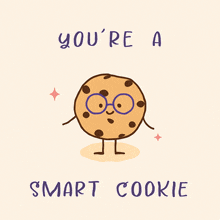Today, almost everyone knows their personality type. The tests are administered seemingly everywhere—schools, workplaces, and many take it independently just for fun as well. Humans are naturally curious to learn more about themselves, making the MBTI types extremely popular with both teens and adults.
However, the use of test results in the workplace and school environments have raised questions about the reliability of the tests. What do these tests really deliver, and what is the science behind them?
The 16 Types
These descriptions were taken from 16personalities.com.
"Analysts:"
INTJ: The "Architect" has introverted, intuitive, thinking, and judging traits. These thoughtful tacticians love perfecting the details of life, and applying creativity and rationality to everything they do. Their inner world is often a private, complex one.
INTP: The "Logician" has introverted, intuitive, thinking, and perceiving traits. These flexible thinkers enjoy taking an unconventional approach to many aspects of life. They often seek out unlikely paths, mixing willingness to experiment with personal creativity.
ENTJ: The "Commander" has extroverted, intuitive, thinking, and judging traits. They are decisive people who love momentum and accomplishment. They gather information to construct their creative visions but rarely hesitate for long before acting on them.
ENTP: The "Debater" has extroverted, intuitive, thinking, and perceiving traits. They tend to be bold and creative, deconstructing and rebuilding ideas with great mental agility. They pursue their goals vigorously despite any resistance they might encounter.
"Diplomats:"
INFJ: The "Advocate" has introverted, intuitive, feeling, and judging traits. They tend to approach life with deep thoughtfulness and imagination. Their inner vision, personal values, and a quiet, principled version of humanism guide them in all things.
INFP: The "Mediator" has introverted, intuitive, feeling, and perceiving traits. These rare personality types tend to be quiet, open-minded, and imaginative, and they apply a caring and creative approach to everything they do.
ENFJ: The "Protagonist" has extroverted, intuitive, feeling, and judging traits. These warm, forthright types love helping others, and they tend to have strong ideas and values. They back their perspective with the creative energy to achieve their goals.
ENFP: The "Campaigner" has extroverted, intuitive, feeling, and perceiving traits. These people tend to embrace big ideas and actions that reflect their sense of hope and goodwill toward others. Their vibrant energy can flow in many directions.
"Sentinels:"
ISTJ: The "Logistician" (different from the "Logician") has introverted, sensing, thinking, and judging traits. These people tend to be reserved yet willful, with a rational outlook on life. They compose their actions carefully and carry them out with methodical purpose.
ISFJ: The "Defender" has introverted, sensing, feeling, and judging traits. These people tend to be warm and unassuming in their own steady way. They’re efficient and responsible, giving careful attention to practical details in their daily lives.
ESTJ: The "Executive" has extroverted, sensing, thinking, and judging traits. They possess great fortitude, emphatically following their own sensible judgment. They often serve as a stabilizing force among others, able to offer solid direction amid adversity.
ESFJ: The "Consul" has extroverted, sensing, feeling, and judging traits. They are attentive and people-focused, and they enjoy taking part in their social community. Their achievements are guided by decisive values, and they willingly offer guidance to others.
"Explorers:"
ISTP: The "Virtuoso" has introverted, sensing, thinking, and perceiving traits. They tend to have an individualistic mindset, pursuing goals without needing much external connection. They engage in life with inquisitiveness and personal skill, varying their approach as needed.
ISFP: The "Adventurer" has introverted, sensing, feeling, and perceiving traits. They tend to have open minds, approaching life, new experiences, and people with grounded warmth. Their ability to stay in the moment helps them uncover exciting potentials.
ESTP: The "Entrepreneur" has extroverted, sensing, thinking, and perceiving traits. They tend to be energetic and action-oriented, deftly navigating whatever is in front of them. They love uncovering life’s opportunities, whether socializing with others or in more personal pursuits.
ESFP: The "Entertainer" has extroverted, sensing, feeling, and perceiving traits. These people love vibrant experiences, engaging in life eagerly and taking pleasure in discovering the unknown. They can be very social, often encouraging others into shared activities.
Understanding the 16 Types
An overview of the test is essential for a complete understanding of the 16 types.
E (Extroverted) / I (Introverted)
To begin, the first letter of your personality type can either be an "E" or an "I." These two letters stand for "Extroverted" and "Introverted." Though pretty self explanatory, this part of your personality type can have the most influence on your behavior. Personalities such as ESFP and ISFP are seemingly on the complete opposite sides of the spectrum behavior wise. While ESFP's are described as entertainers and the life of the party, ISFP's are down-to-earth and reserved individuals, who need time to recharge after social events.
S (Sensing) / N (Intuition)
The next letter of your personality type can be an "S" or an "N." These two letters stand for "Sensing" and "Intuition." In the simplest terms, people who are sensing prefer to get hands-on, are down-to-earth, and rely on facts and details. They focus on the reality of a situation and the present world around them, while picking up information from their senses. People with intuition, however, are the opposite. They prefer to focus on ideas and possibilities, and rather than thinking about the present, they enjoy pondering about the future.
F (Feeling) / T (Thinking)
The third letter of your personality type can be an "F" or a "T." These two letters stand for "Feeling" and "Thinking." People who focus on feelings consider their emotions and the feelings of other people when making decisions. They can be described as those who listen to their heart rather than their brain. People who focus on thinking, on the other hand, rely on the facts to make decisions. They can also be described as rather detached and unbiased, and think logically in day-to-day situations.
P (Perceiving) / J (Judging)
The fourth and final letter of your personality type can either be a "P" or a "J." These two letters stand for "Perceiving" and "Judging." People who are judging are more organized and systematic- many enjoy having a rigid structure in their schedules. Perceiving people, on the other hand, are more flexible and easygoing. It is much easier for them to adapt to change, and they prefer to "follow the flow" instead of planning out their days.
Conclusion
The problem is that for this system to work, the individual has to be at either end of the spectrum for the most accurate results. Most people are somewhere around the middle, however, which blurs the line between some of the personality types. According to the MBTI, everyone is dominant in one area or the other, and the foundation for the test is based on this theory.
As a result, most people can find a little bit of themselves in every personality type. In addition, there is not enough research and scientific evidence to properly back up the science of the MBTI test.
To conclude, rather than be taken seriously, this test should be considered as more of a fun way to learn more about yourself.











